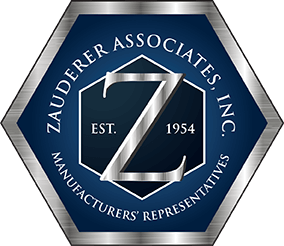EC Motor Overview
The largest change in the motorized fan world recently is the introduction of the Electronically Commutated Motor (EC Motor or ECM) of which we have a large assortment of products to offer. An EC motor is a brushless, direct current, external rotor type of motor. The way an EC motor operates is that it takes input AC voltage, basically converting AC current to DC current, and then controls it using a 1-10-volt signal. This signal can be controlled by a Potentiometer that operates like a light dimmer allowing an infinite amount of operating points. An EC motor’s integrated monitoring functions also records motor temperature, locked rotor, and load.
Difference between AC, DC and EC fans
The difference between AC and DC is that an AC fan only operates at one speed unless you install an expensive VFD drive to change the fan speed. This VFD drive also requires 3 phase current, so the end user will need to have a higher voltage 3 phase supply to accommodate the fan. As explained above, an EC fan requires a very inexpensive potentiometer which allows the fan to run at many speeds, can run on 1 phase or 3 phase power, and can be set up to run on constant CFM or constant pressure.
EC fans are known to be much more efficient than AC fans depending on the application. An AC fan would be the proper choice if you intend to run the fan at constant speed any time the fan is running. The increased efficiency of an EC fan is achieved by the electronic controls automatically calculating what is required and reducing the speed of the fan depending on conditions programmed into the electronics. A typical EC fan application will see efficiency rating of over 80% and 35% or more reduction in energy consumption. This lower consumption is good for the environment and lowers the operating cost for the end user.
EC fans are more expensive than AC fans, but we have at our resources the ability to do cost calculations on projects or systems to determine how long it will take to recover your increased investment cost going from AC to EC fan. This is usually much shorter of a time period than you would expect. We can also calculate your power consumption for both types of fans for comparison purposes. After the recovery time you will then reap the rewards of the reduced energy needed to operate your systems.
EC fans are also used in fan grids where multiple fans are using in place of a large external motor driven system. The fan grids are usually designed with redundancy so if a fan fails the other fans will all increase speed and CFM to offset the failed fan so that the system continues to operate at the desired output. Our systems are more compact and much more easily installed due to compact construction and weight.
AC, DC and EC fans available
There are many types of fans available in AC, DC and EC including axial fans, centrifugal forward curved fans, backward curved fans (plug fans), high performance fans, high efficiency fans, electronic cooling fans (muffin fans), railway fans, explosion proof fans, box fans, tube fans, duct fans, roof fans, air curtains and more.
For more information on axial fans, please read our Axial Fan Guide.
For more information on the types of air moving components that we sell, please click on Fans and Fan Blades.
Please click the “Request More Info” button below if you have any questions or if there are any applications that we can review for you at this time.
